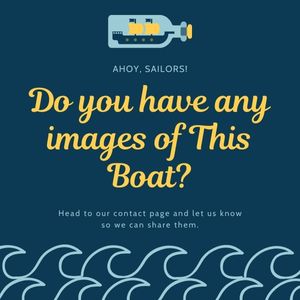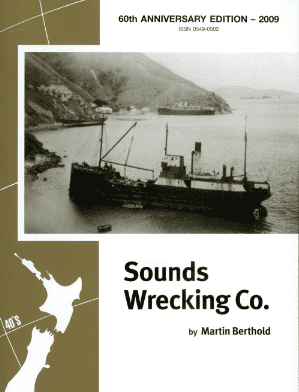Marilyn: WWII Navy Vessel to Fishing Boat
Build Date
1943
Boat Builder
Associated Boatbuilders Ltd.
Length
112 feet
Beam
17.9 feet

Marilyn is built for the Navy
Marilyn was commissioned under the number ML405 by the Royal New Zealand Navy on the 21 April 1943. She was a Fairmile motor vessel with a cutter rig and two engines totalling 290bhp. Marilyn was originally registered as weighing 103.08 gross tons/48.34 registered net tons but this changed a few times over the years. In 1949 this was changed to 107.91 gross tons/44.73 registered net tons. Later in 1951 Marilyn’s weight was updated again as 109.85 gross tons/56.31 registered net tons. Finally in 1960 she was registered with 111.77 gross tons/47.71 registered net tons.
One year after she was commissioned, on the 1st March 1944, Marilyn departed Auckland to serve in World War Two. This journey took Marilyn from Auckland to Guadalcanal and Renard Sound before returning to Auckland on the 29 July 1945. Whilst deployed in the Solomon Islands Marilyn was used for patrol duties. On her return to Auckland, Marilyn was said to have been paid off and moved onto a mooring at Greenhithe Trot, Pine Island in August 1945.
Marilyns owners from 1947 to her fishing days in the 1960s
The navy owned Marilyn until April 1947 when they sold her to R.A. Gallagher. Then in 1948 Marilyn was registered as belonging to the Southern Fairmile Co. Ltd., Christchurch. During this time Marilyn was registered to the Port of Lyttleton. From 1948 to 1956 she was used to carry coastal cargo between Wellington and Lyttleton.
From 1961 to 1962 Marilyn was owned by the Christchurch Company Director. Foirst from the 26 May 1961 to 27 June 1961 Marilyn’s owner was registered as Patrick Attwood Smith. Then from 27 June 1961 to 14 May 1962 Marilyn was registered to Maurice Leigh Newman.
Ownership changed again on the 14th May 1962 when she was registered to Feron & Son Ltd., Christchurch. Their ownership of Marilyn ceased in early August 1966.
At some point Marilyn was converted into a fishing boat. Presumably this was around 1966 as she was purchased by Emanuel Aspros of Oamaru in early August 1966 and on the 9th Aug 1966 Aspros Fishing Co. Ltd., took ownership. Marilyn was used for fishing around the South Island and off the Chathams but in early August 1967 Marilyn arrived in bluff for repairs to damage sustained off Waitangi, Chatham Islands.
Marilyn is damaged by the Wahine Storm
From 1967 Marilyn was for sale at Shelly Bay until she was badly damaged by the Wahine storm on 10 April 1968. Marilyn was impaled by a wharf pile whilst moored during the storm and lay half sunk on a 45-degree angle across the slipway rails. With the slipway made inoperable by this sinking they lifted Marilyn off the bottom on 19th April with the floating crane Hikitia. Marilyn was then slipped on the Shelly Bay cradle and assessed by Captain Warwick Dunsford. Marilyn was declared a ‘constructive total loss and broken up’ and her register was closed on 30 May 1968. Either before or after this disaster the ownership of Marilyn changed as she was seized by the slipway lessee Gordon cooper in lieu of unpaid debts.
Cooper had been instructed by Dunsford to salvage the vessel and remove the twin GM diesel engines and strip other valuable gear off her. When a truck turned up a week or so later to collect everything Cooper refused to release the valuables until he was reimbursed for the work done, the use of the Hikitia and the loss of earnings from the slip being blocked. Dunsford was not happy but he didn’t pay up so Cooper seized the vessel and offered her instead to Francis Wells. They agreed the price of $1,500 and the Marilyn was sold to to Francis Wells and David Jones of the Sounds Wrecking Company in May 1968.
To get Marilyn to Wakatahuri for wrecking was not as easy as it sounds. Francis Wells and Davey Jones travelled to Shelly Bay on the Valmarie loaded with everything they needed to make Marilyn seaworthy enough to tow. This included poor grade plywood, galvanised nails, canvas, tar and cement. Patching started at 4am and was not always harmonious but they got Marilyn watertight enough to travel.
Salvaging the Marilyn by The Sounds Wrecking Company
The only issue was the Harbour Master, Bill Galloway, instructed Cooper that Marilyn must have navigation lights and radar reflectors before she could leave Wellington. Galloway also wanted to inspect the boat to ensure it complied with his rules before she was launched off the slipway. But this was not how Wells planned to do things and he persuaded Cooper to launch the boat on the evening of the 11th June 1968. To Cooper’s amazement Marilyn floated and Wells and Jones quickly set her up for the tow to Wakathauri the next morning.
Wells and Jones were almost in trouble for breaking the rules as Galloway phoned Cooper to question why the Valmarie had been seen towing Marilyn from Beacon Hill. But Cooper assured him, he had seen Marilyn on the Shelly Bay slipway when he left for home that day. Unable to question Cooper further Galloway let it go.
But the tow didn’t exactly go to plan. After the excitement of seeing Marilyn floating happily, the mood quickly shifted to panic as they discovered a broken fuel pipe was leaking diesel into the bilge. Although there was limited risk of the fuel catching fire there was the risk of the diesel leaking into the bay. This would have brought Wells and Jones a hefty fine for pollution. They were also worried the diesel would cause problems for their patches because they had used lots of tar. The worry was the diesel might reduce the stickiness and waterproofing provided by the tar. To rectify this Wells poured a forty-litre drum of detergent into the bilge to neutralise the diesel. The bilges became a soapy mess but they made it to Wakatahuri.
Once Marilyn got to Wakatahuri she was placed on a mooring for 12 months. On the 29th November 1969 Marilyn was beached and burned to get her scrap and fastenings out. She rendered around four tonnes of nonferrous scrap which was sold to G.R. Stevens & Co. Ltd.
References
To research the Marilyn we used the book Boats For A Lifetime by Yvonne M Fell and the 2009 anniversary edition of Marine News which outlines the history of the Sounds Wrecking Company.
Related Posts
Valmarie – 54ft wooden launch built by Francis Wells and used in his Sounds Wrecking Company missions.
Southern Isles – 36ft wooden launch built by Tom Wells and used during his Sounds Wrecking Company days.
Tiroa – 111ft trading vessel built in 1916 and eventually wrecked at Wakatahuri.
Southern Isle – 92 feet scow D.M. Darroch scow with a connection to Nelson.

